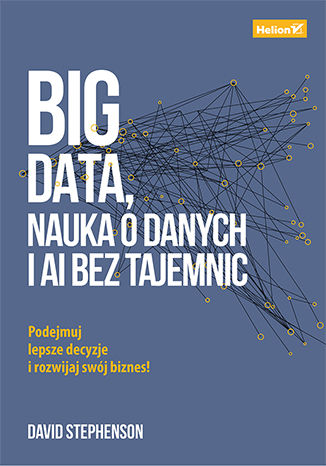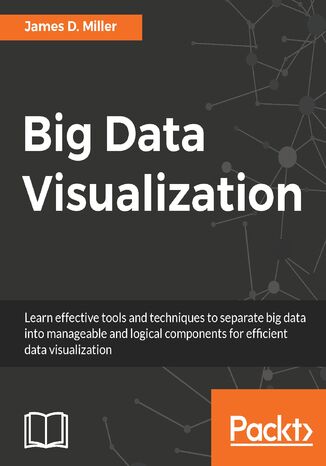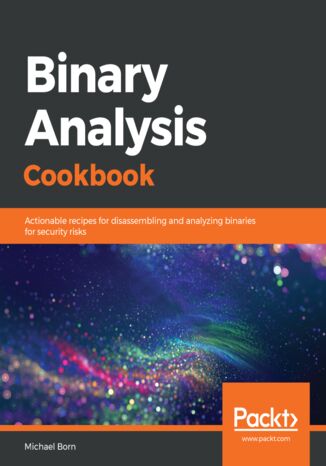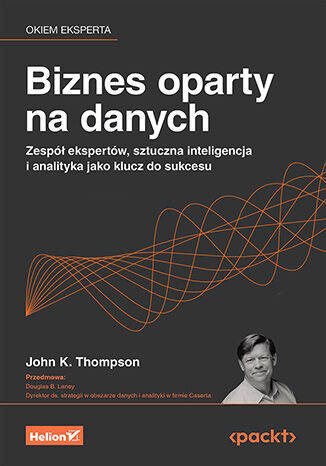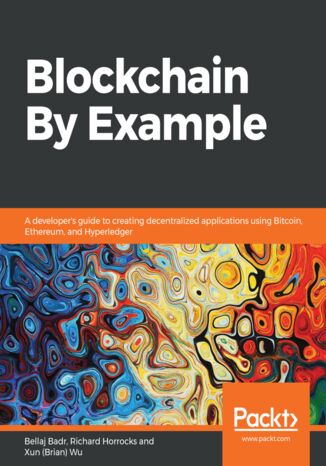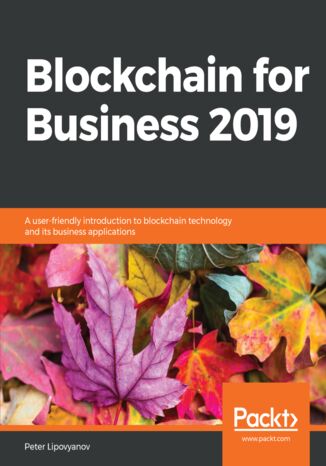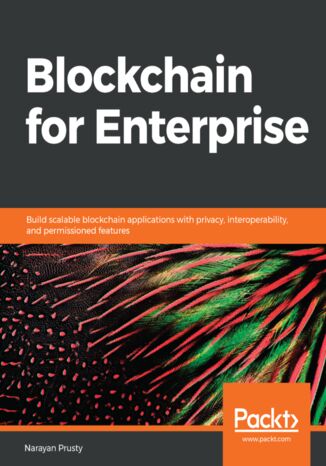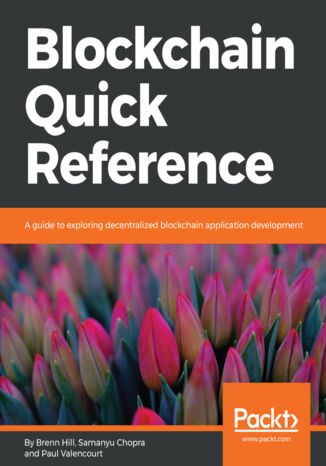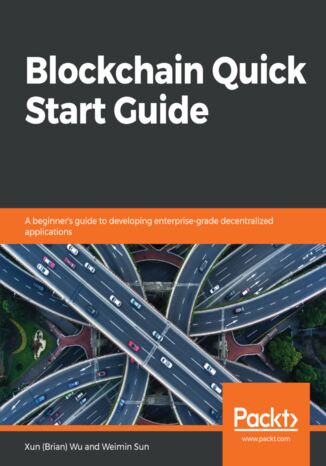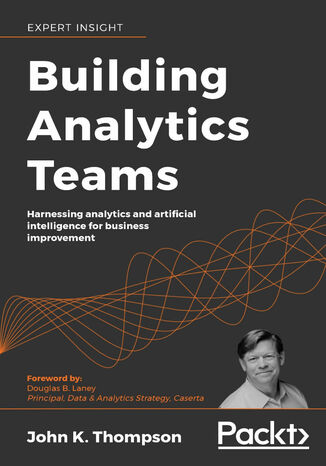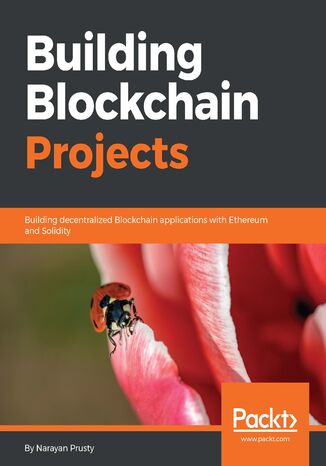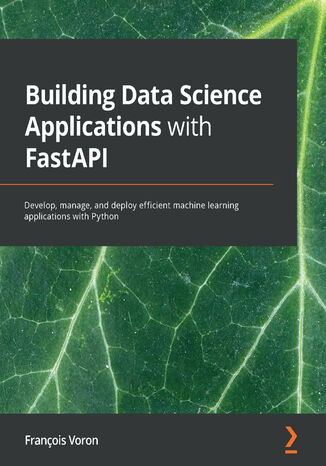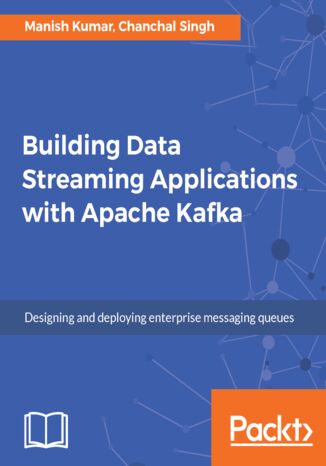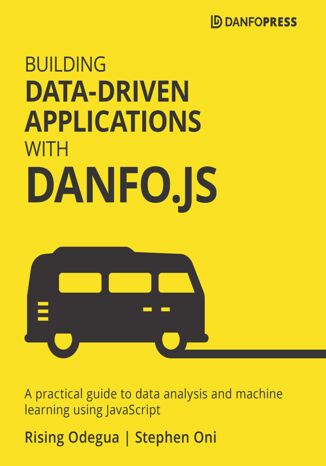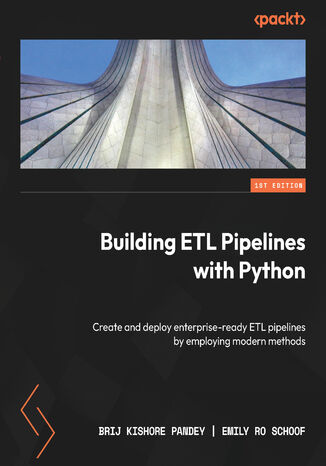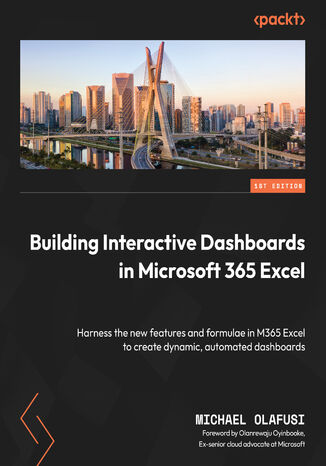Categories
Ebooks
-
Business and economy
- Bitcoin
- Businesswoman
- Coaching
- Controlling
- E-business
- Economy
- Finances
- Stocks and investments
- Personal competence
- Computer in the office
- Communication and negotiation
- Small company
- Marketing
- Motivation
- Multimedia trainings
- Real estate
- Persuasion and NLP
- Taxes
- Social policy
- Guides
- Presentations
- Leadership
- Public Relation
- Reports, analyses
- Secret
- Social Media
- Sales
- Start-up
- Your career
- Management
- Project management
- Human Resources
-
For children
-
For youth
-
Education
-
Encyclopedias, dictionaries
-
E-press
- Architektura i wnętrza
- Health and Safety
- Biznes i Ekonomia
- Home and garden
- E-business
- Ekonomia i finanse
- Esoterecism
- Finances
- Personal finance
- Business
- Photography
- Computer science
- HR & Payroll
- For women
- Computers, Excel
- Accounts
- Culture and literature
- Scientific and academic
- Environmental protection
- Opinion-forming
- Education
- Taxes
- Travelling
- Psychology
- Religion
- Agriculture
- Book and press market
- Transport and Spedition
- Healthand beauty
-
History
-
Computer science
- Office applications
- Data bases
- Bioinformatics
- IT business
- CAD/CAM
- Digital Lifestyle
- DTP
- Electronics
- Digital photography
- Computer graphics
- Games
- Hacking
- Hardware
- IT w ekonomii
- Scientific software package
- School textbooks
- Computer basics
- Programming
- Mobile programming
- Internet servers
- Computer networks
- Start-up
- Operational systems
- Artificial intelligence
- Technology for children
- Webmastering
-
Other
-
Foreign languages
-
Culture and art
-
School reading books
-
Literature
- Antology
- Ballade
- Biographies and autobiographies
- For adults
- Dramas
- Diaries, memoirs, letters
- Epic, epopee
- Essay
- Fantasy and science fiction
- Feuilletons
- Work of fiction
- Humour and satire
- Other
- Classical
- Crime fiction
- Non-fiction
- Fiction
- Mity i legendy
- Nobelists
- Novellas
- Moral
- Okultyzm i magia
- Short stories
- Memoirs
- Travelling
- Narrative poetry
- Poetry
- Politics
- Popular science
- Novel
- Historical novel
- Prose
- Adventure
- Journalism, publicism
- Reportage novels
- Romans i literatura obyczajowa
- Sensational
- Thriller, Horror
- Interviews and memoirs
-
Natural sciences
-
Social sciences
-
School textbooks
-
Popular science and academic
- Archeology
- Bibliotekoznawstwo
- Cinema studies
- Philology
- Polish philology
- Philosophy
- Finanse i bankowość
- Geography
- Economy
- Trade. World economy
- History and archeology
- History of art and architecture
- Cultural studies
- Linguistics
- Literary studies
- Logistics
- Maths
- Medicine
- Humanities
- Pedagogy
- Educational aids
- Popular science
- Other
- Psychology
- Sociology
- Theatre studies
- Theology
- Economic theories and teachings
- Transport i spedycja
- Physical education
- Zarządzanie i marketing
-
Guides
-
Game guides
-
Professional and specialist guides
-
Law
- Health and Safety
- History
- Road Code. Driving license
- Law studies
- Healthcare
- General. Compendium of knowledge
- Academic textbooks
- Other
- Construction and local law
- Civil law
- Financial law
- Economic law
- Economic and trade law
- Criminal law
- Criminal law. Criminal offenses. Criminology
- International law
- International law
- Health care law
- Educational law
- Tax law
- Labor and social security law
- Public, constitutional and administrative law
- Family and Guardianship Code
- agricultural law
- Social law, labour law
- European Union law
- Industry
- Agricultural and environmental
- Dictionaries and encyclopedia
- Public procurement
- Management
-
Tourist guides and travel
- Africa
- Albums
- Southern America
- North and Central America
- Australia, New Zealand, Oceania
- Austria
- Asia
- Balkans
- Middle East
- Bulgary
- China
- Croatia
- The Czech Republic
- Denmark
- Egipt
- Estonia
- Europe
- France
- Mountains
- Greece
- Spain
- Holand
- Iceland
- Lithuania
- Latvia
- Mapy, Plany miast, Atlasy
- Mini travel guides
- Germany
- Norway
- Active travelling
- Poland
- Portugal
- Other
- Przewodniki po hotelach i restauracjach
- Russia
- Romania
- Slovakia
- Slovenia
- Switzerland
- Sweden
- World
- Turkey
- Ukraine
- Hungary
- Great Britain
- Italy
-
Psychology
- Philosophy of life
- Kompetencje psychospołeczne
- Interpersonal communication
- Mindfulness
- General
- Persuasion and NLP
- Academic psychology
- Psychology of soul and mind
- Work psychology
- Relacje i związki
- Parenting and children psychology
- Problem solving
- Intellectual growth
- Secret
- Sexapeal
- Seduction
- Appearance and image
- Philosophy of life
-
Religion
-
Sport, fitness, diets
-
Technology and mechanics
Audiobooks
-
Business and economy
- Bitcoin
- Businesswoman
- Coaching
- Controlling
- E-business
- Economy
- Finances
- Stocks and investments
- Personal competence
- Communication and negotiation
- Small company
- Marketing
- Motivation
- Real estate
- Persuasion and NLP
- Taxes
- Social policy
- Guides
- Presentations
- Leadership
- Public Relation
- Secret
- Social Media
- Sales
- Start-up
- Your career
- Management
- Project management
- Human Resources
-
For children
-
For youth
-
Education
-
Encyclopedias, dictionaries
-
E-press
-
History
-
Computer science
-
Other
-
Foreign languages
-
Culture and art
-
School reading books
-
Literature
- Antology
- Ballade
- Biographies and autobiographies
- For adults
- Dramas
- Diaries, memoirs, letters
- Epic, epopee
- Essay
- Fantasy and science fiction
- Feuilletons
- Work of fiction
- Humour and satire
- Other
- Classical
- Crime fiction
- Non-fiction
- Fiction
- Mity i legendy
- Nobelists
- Novellas
- Moral
- Okultyzm i magia
- Short stories
- Memoirs
- Travelling
- Poetry
- Politics
- Popular science
- Novel
- Historical novel
- Prose
- Adventure
- Journalism, publicism
- Reportage novels
- Romans i literatura obyczajowa
- Sensational
- Thriller, Horror
- Interviews and memoirs
-
Natural sciences
-
Social sciences
-
Popular science and academic
-
Guides
-
Professional and specialist guides
-
Law
-
Tourist guides and travel
-
Psychology
- Philosophy of life
- Interpersonal communication
- Mindfulness
- General
- Persuasion and NLP
- Academic psychology
- Psychology of soul and mind
- Work psychology
- Relacje i związki
- Parenting and children psychology
- Problem solving
- Intellectual growth
- Secret
- Sexapeal
- Seduction
- Appearance and image
- Philosophy of life
-
Religion
-
Sport, fitness, diets
-
Technology and mechanics
Videocourses
-
Data bases
-
Big Data
-
Biznes, ekonomia i marketing
-
Cybersecurity
-
Data Science
-
DevOps
-
For children
-
Electronics
-
Graphics/Video/CAX
-
Games
-
Microsoft Office
-
Development tools
-
Programming
-
Personal growth
-
Computer networks
-
Operational systems
-
Software testing
-
Mobile devices
-
UX/UI
-
Web development
-
Management
Podcasts
Data analysis
Big data, nauka o danych i AI bez tajemnic. Podejmuj lepsze decyzje i rozwijaj swój biznes!
Koncepcja big data zmieniła zasady gry w biznesie. Wiele osób z kadry zarządczej nie rozumie specyfiki tego rodzaju danych: ogromnych, szybko narastających, często niepasujących do tradycyjnej struktury. Są one zasadniczo różne od konwencjonalnych danych, zarówno pod względem wielkości, jak i złożoności. Rzucają nowe wyzwania, stwarzają nowe możliwości, zacierają tradycyjne granice konkurencji i zmuszają do zmiany paradygmatów pozyskiwania wartości z danych. Big data i data science wraz z uczeniem maszynowym radykalnie zmieniają ekosystem biznesu. Aby przetrwać tę rewolucję, trzeba dostosować się do nowych warunków. Ta książka jest przystępnym wprowadzeniem do koncepcji big data i data science. Pozwoli na uzyskanie wiedzy niezbędnej do oceny, czy korzyści z tych technologii są warte kosztów i wysiłku związanych z wdrożeniem w firmie. Poszczególne techniki zostały dokładnie i przejrzyście opisane. Przedstawiono zasady tworzenia odpowiednich strategii. Wyjaśniono, jakich zasobów i jakich ludzi potrzeba do przeprowadzenia transformacji w kierunku zbierania, analizy i wykorzystywania danych, a także omówiono związane z tym ryzyko. Ważnym elementem książki są praktyczne wskazówki i podpowiedzi. W tej książce: podstawy big data, data science i sztucznej inteligencji praktyczne zastosowanie big data w technikach analitycznych przegląd podstawowych rodzajów analityki i dobór technologii przygotowanie firmy do wdrożenia projektów big data i data science wymagania prawne i ochrona danych a korzystanie z narzędzi big data Big data: łatwiejsze, niż myślisz, skuteczniejsze, niż marzysz!
Big Data Visualization. Bring scalability and dynamics to your Big Data visualization
Gain valuable insight into big data analytics with this book. Covering the tools you need to analyse data, together with IBM certified expert James Miller?s insight, this book is the key to data visualization success. ? Learn the tools & techniques to process big data for efficient data visualization ? Packed with insightful real-world use cases ? Addresses the difficulties faced by professionals in the field of big data analytics
Binary analysis is the process of examining a binary program to determine information security actions. It is a complex, constantly evolving, and challenging topic that crosses over into several domains of information technology and security. This binary analysis book is designed to help you get started with the basics, before gradually advancing to challenging topics. Using a recipe-based approach, this book guides you through building a lab of virtual machines and installing tools to analyze binaries effectively. You'll begin by learning about the IA32 and ELF32 as well as IA64 and ELF64 specifications. The book will then guide you in developing a methodology and exploring a variety of tools for Linux binary analysis. As you advance, you'll learn how to analyze malicious 32-bit and 64-bit binaries and identify vulnerabilities. You'll even examine obfuscation and anti-analysis techniques, analyze polymorphed malicious binaries, and get a high-level overview of dynamic taint analysis and binary instrumentation concepts. By the end of the book, you'll have gained comprehensive insights into binary analysis concepts and have developed the foundational skills to confidently delve into the realm of binary analysis.
Biznes oparty na danych. Zespół ekspertów, sztuczna inteligencja i analityka jako klucz do sukcesu
John K. Thompson, Douglas B. Laney
Skuteczna analityka wymaga wykonywania wieloaspektowego zestawu zadań w ramach właściwie zarządzanego procesu. Thomas H. Davenport, profesor Babson College Analityka mocno się zmieniła. Kiedyś skupiała się głównie na tworzeniu raportów i wykresów, które prezentowały dane w atrakcyjnej formie. Teraz stała się bardziej zaawansowana ― zespoły pracują w nowy sposób, łącząc różnorodne umiejętności, takie jak analiza danych, programowanie i znajomość biznesu. Dzięki temu decyzje podejmowane w firmach mogą być lepsze, a osiąganie celów ― łatwiejsze. Jednak by to działało, potrzebne są zmiany w strukturze organizacji i podejściu do pracy. Oto najbardziej praktyczny poradnik korzystania z analityki w funkcjonowaniu organizacji! Bill Schmarzo, dyrektor do spraw innowacji w Hitachi Vantara W tej książce znajdziesz podstawowe koncepcje związane z budowaniem skutecznych zespołów analitycznych i zarządzaniem nimi. Wyjaśniono w niej dokładnie, co należy robić, kogo zatrudniać, jakie projekty realizować i czego unikać na drodze do zbudowania sprawnego zespołu analitycznego. Omówiono również znaczenie biznesowego cyklu decyzyjnego w osiąganiu trwałego sukcesu przedsiębiorstwa. Ponadto poznasz wartościowe modele z obszaru zaawansowanej analityki i prognoz opartych na analizie danych. Nie zabrakło też opisu metod i praktyk zarządzania zespołami analitycznymi, a także wskazówek, jak wpływać na oczekiwania kierownictwa i wybierać projekty o największej wartości. Dzięki tej książce dyrektorzy wykonawczy i zespoły analityczne dowiedzą się, jak wypracować trwałą, strategiczną, a nawet rewolucyjną przewagę! Kirk Borne, główny danolog w Booz Allen Hamilton John K. Thompson jest dyrektorem do spraw technologii z ponad 30-letnim doświadczeniem w dziedzinie zaawansowanej analityki biznesowej. Obecnie odpowiada za globalny zespół zaawansowanej analityki i sztucznej inteligencji w CSL Behring. Interesuje go rozwijanie innowacyjnych technologii w celu zwiększenia wartości uzyskiwanej przez organizacje na całym świecie. Bogata wiedza i praktyczne doświadczenie autora zwiększają wartość tej doskonałej książki! Judith Hurwitz, prezeska Hurwitz & Associates
Bellaj Badr, Richard Horrocks, Xun (Brian) Wu
The Blockchain is a revolution promising a new world without middlemen. Technically, it is an immutable and tamper-proof distributed ledger of all transactions across a peer-to-peer network. With this book, you will get to grips with the blockchain ecosystem to build real-world projects.This book will walk you through the process of building multiple blockchain projects with different complexity levels and hurdles. Each project will teach you just enough about the field's leading technologies, Bitcoin, Ethereum, Quorum, and Hyperledger in order to be productive from the outset. As you make your way through the chapters, you will cover the major challenges that are associated with blockchain ecosystems such as scalability, integration, and distributed file management. In the concluding chapters, you’ll learn to build blockchain projects for business, run your ICO, and even create your own cryptocurrency. Blockchain by Example also covers a range of projects such as Bitcoin payment systems, supply chains on Hyperledger, and developing a Tontine Bank Every is using Ethereum.By the end of this book, you will not only be able to tackle common issues in the blockchain ecosystem, but also design and build reliable and scalable distributed systems.
Blockchain for Business 2019 is a comprehensive guide that enables you to bring in various blockchain functionalities to extend your existing business models and make correct fully-informed decisions. You will learn how decentralized applications are transforming numerous business sectors that are expected to play a huge role in the future. You will see how large corporations are already implementing blockchain technology now. You will then learn about the various blockchain services, such as Bitcoin, Ethereum, Hyperledger, and others to understand their use cases in a variety of business domains. You will develop a solid fundamental understanding of blockchain architecture. Moving ahead, you will get to grips with the inner workings of blockchain, with detailed explanations of mining, decentralized consensus, cryptography, smart contracts, and many other important concepts. You will delve into a realistic view of the current state of blockchain technology, along with its issues, limitations, and potential solutions that can take it to the next level.By the end of this book, you will all be well versed in the latest innovations and developments in the emerging blockchain space.
The increasing growth in blockchain use is enormous, and it is changing the way business is done. Many leading organizations are already exploring the potential of blockchain. With this book, you will learn to build end-to-end enterprise-level decentralized applications and scale them across your organization to meet your company's needs. This book will help you understand what DApps are and how the blockchain ecosystem works, via real-world examples. This extensive end-to-end book covers every blockchain aspect for business and for developers. You will master process flows and incorporate them into your own enterprise. You will learn how to use J.P. Morgan’s Quorum to build blockchain-based applications. You will also learn how to write applications that can help communicate enterprise blockchain solutions. You will learn how to write smart contracts that run without censorship and third-party interference.Once you've grasped what a blockchain is and have learned about Quorum, you will jump into building real-world practical blockchain applications for sectors such as payment and money transfer, healthcare, cloud computing, supply chain management, and much more.
Blockchain Quick Reference. A guide to exploring decentralized blockchain application development
Brenn Hill, Samanyu Chopra, Paul Valencourt
Blockchain Quick Reference takes you through the electrifying world of blockchain technology and is designed for those who want to polish their existing knowledge regarding the various pillars of the blockchain ecosystem.This book is your go-to guide, teaching you how to apply principles and ideas for making your life and business better. You will cover the architecture, Initial Coin Offerings (ICOs), tokens, smart contracts, and terminologies of the blockchain technology, before studying how they work. All you need is a curious mind to get started with blockchain technology. Once you have grasped the basics, you will explore components of Ethereum, such as ether tokens, transactions, and smart contracts, in order to build simple Dapps. You will then move on to learning why Solidity is used specifically for Ethereum-based projects, followed by exploring different types of blockchain with easy-to-follow examples. All this will help you tackle challenges and problems. By the end of this book, you will not only have solved current and future problems relating to blockchain technology but will also be able to build efficient decentralized applications.
Blockchain is a technology that powers the development of decentralized applications.This technology allows the construction of a network with no single control that enables participants to make contributions to and receive benefits from the network directly.This book will give you a thorough overview of blockchain and explain how a blockchain works.You will begin by going through various blockchain consensus mechanisms and cryptographic hash functions. You will then learn the fundamentals of programming in Solidity – the defacto language for developing decentralize, applications in Ethereum. After that, you will set up an Ethereum development environment and develop, package, build, and test campaign-decentralized applications.The book also shows you how to set up Hyperledger composer tools, analyze business scenarios, design business models, and write a chain code. Finally, you will get a glimpse of how blockchain is actually used in different real-world domains. By the end of this guide, you will be comfortable working with basic blockchain frameworks, and develop secure, decentralized applications in a hassle-free manner.
Building Analytics Teams. Harnessing analytics and artificial intelligence for business improvement
John K. Thompson, Douglas B. Laney
In Building Analytics Teams, John K. Thompson, with his 30+ years of experience and expertise, illustrates the fundamental concepts of building and managing a high-performance analytics team, including what to do, who to hire, projects to undertake, and what to avoid in the journey of building an analytically sound team. The core processes in creating an effective analytics team and the importance of the business decision-making life cycle are explored to help achieve initial and sustainable success.The book demonstrates the various traits of a successful and high-performing analytics team and then delineates the path to achieve this with insights on the mindset, advanced analytics models, and predictions based on data analytics. It also emphasizes the significance of the macro and micro processes required to evolve in response to rapidly changing business needs.The book dives into the methods and practices of managing, developing, and leading an analytics team. Once you've brought the team up to speed, the book explains how to govern executive expectations and select winning projects.By the end of this book, you will have acquired the knowledge to create an effective business analytics team and develop a production environment that delivers ongoing operational improvements for your organization.
Blockchain is a decentralized ledger that maintains a continuously growing list of data records that are secured from tampering and revision. Every user is allowed to connectto the network, send new transactions to it, verify transactions, and create new blocks,making it permission-less.This book will teach you what blockchain is, how it maintains data integrity, and how to create real-world blockchain projects using Ethereum. With interesting real-worldprojects, you will learn how to write smart contracts which run exactly as programmedwithout any chance of fraud, censorship, or third-party interference, and build end-to-eapplications for blockchain.You will learn about concepts such as cryptography in cryptocurrencies, ether security, mining, smart contracts, solidity, and more. You will also learn about web sockets, various API services for Ethereum, and much more.The blockchain is the main technical innovation of bitcoin, where it serves as the public ledger for bitcoin transactions.
FastAPI is a web framework for building APIs with Python 3.6 and its later versions based on standard Python-type hints. With this book, you’ll be able to create fast and reliable data science API backends using practical examples.This book starts with the basics of the FastAPI framework and associated modern Python programming language concepts. You'll be taken through all the aspects of the framework, including its powerful dependency injection system and how you can use it to communicate with databases, implement authentication and integrate machine learning models. Later, you’ll cover best practices relating to testing and deployment to run a high-quality and robust application. You’ll also be introduced to the extensive ecosystem of Python data science packages. As you progress, you’ll learn how to build data science applications in Python using FastAPI. The book also demonstrates how to develop fast and efficient machine learning prediction backends and test them to achieve the best performance. Finally, you’ll see how to implement a real-time face detection system using WebSockets and a web browser as a client.By the end of this FastAPI book, you’ll have not only learned how to implement Python in data science projects but also how to maintain and design them to meet high programming standards with the help of FastAPI.
Apache Kafka is a popular distributed streaming platform that acts as a messaging queue or an enterprise messaging system. It lets you publish and subscribe to a stream of records, and process them in a fault-tolerant way as they occur.This book is a comprehensive guide to designing and architecting enterprise-grade streaming applications using Apache Kafka and other big data tools. It includes best practices for building such applications, and tackles some common challenges such as how to use Kafka efficiently and handle high data volumes with ease. This book first takes you through understanding the type messaging system and then provides a thorough introduction to Apache Kafka and its internal details. The second part of the book takes you through designing streaming application using various frameworks and tools such as Apache Spark, Apache Storm, and more. Once you grasp the basics, we will take you through more advanced concepts in Apache Kafka such as capacity planning and security.By the end of this book, you will have all the information you need to be comfortable with using Apache Kafka, and to design efficient streaming data applications with it.
Most data analysts use Python and pandas for data processing for the convenience and performance these libraries provide. However, JavaScript developers have always wanted to use machine learning in the browser as well. This book focuses on how Danfo.js brings data processing, analysis, and ML tools to JavaScript developers and how to make the most of this library to build data-driven applications.Starting with an overview of modern JavaScript, you’ll cover data analysis and transformation with Danfo.js and Dnotebook. The book then shows you how to load different datasets, combine and analyze them by performing operations such as handling missing values and string manipulations. You’ll also get to grips with data plotting, visualization, aggregation, and group operations by combining Danfo.js with Plotly. As you advance, you’ll create a no-code data analysis and handling system and create-react-app, react-table, react-chart, Draggable.js, and tailwindcss, and understand how to use TensorFlow.js and Danfo.js to build a recommendation system. Finally, you’ll build a Twitter analytics dashboard powered by Danfo.js, Next.js, node-nlp, and Twit.js.By the end of this app development book, you’ll be able to build and embed data analytics, visualization, and ML capabilities into any JavaScript app in server-side Node.js or the browser.
Brij Kishore Pandey, Emily Ro Schoof
Modern extract, transform, and load (ETL) pipelines for data engineering have favored the Python language for its broad range of uses and a large assortment of tools, applications, and open source components. With its simplicity and extensive library support, Python has emerged as the undisputed choice for data processing.In this book, you’ll walk through the end-to-end process of ETL data pipeline development, starting with an introduction to the fundamentals of data pipelines and establishing a Python development environment to create pipelines. Once you've explored the ETL pipeline design principles and ET development process, you'll be equipped to design custom ETL pipelines. Next, you'll get to grips with the steps in the ETL process, which involves extracting valuable data; performing transformations, through cleaning, manipulation, and ensuring data integrity; and ultimately loading the processed data into storage systems. You’ll also review several ETL modules in Python, comparing their pros and cons when building data pipelines and leveraging cloud tools, such as AWS, to create scalable data pipelines. Lastly, you’ll learn about the concept of test-driven development for ETL pipelines to ensure safe deployments.By the end of this book, you’ll have worked on several hands-on examples to create high-performance ETL pipelines to develop robust, scalable, and resilient environments using Python.
Michael Olafusi, Olanrewaju Oyinbooke
M365 Excel is a modern Excel version that is constantly updated with features that make creating and automating analyses, reports, and dashboards very easy compared with older Excel versions. This book will help you leverage its full capabilities, beginning with a quick overview of what dashboards are and how they are different from other types of reports. Then, you’ll familiarize yourself with the different standard dashboards currently available and what they are meant to accomplish for organizations. As you progress, you’ll get to grips with the use of new powerful tools such as Power Query and dynamic array formulae in the automation of analysis, gaining insights into the right approach to take in building effective dashboards. You’ll equip yourself with not only all the essential formulae, charts, and non-chart visuals but also learn how to set up your dashboard perfectly. Along the way, you’ll build a couple of awesome dashboards from scratch to utilize your newfound knowledge.By the end of this book, you will be able to carry out an impressive and robust level of analysis on business data that may come from multiple sources or files, using better processes, formulae, and best practices in M365 to create insightful dashboards faster.

